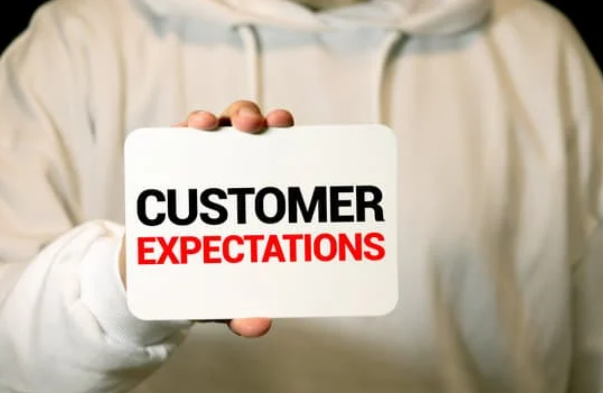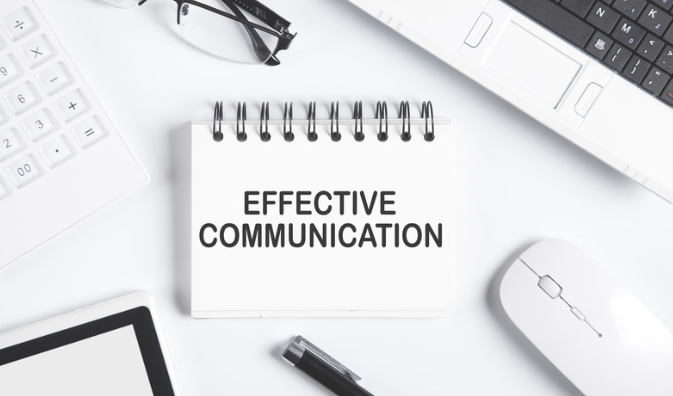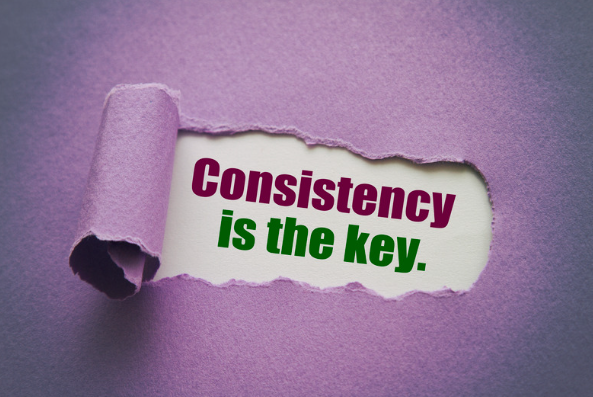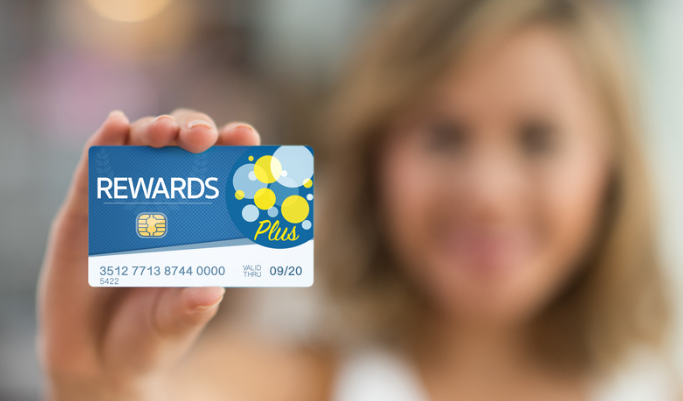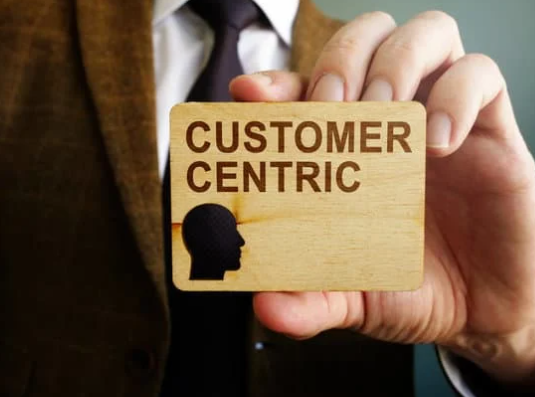Nowadays, building lasting customer relationships is essential for sustainable success. These relationships lead to repeat business and are a valuable source of referrals and positive word-of-mouth. When customers feel valued and appreciated, they are more likely to become loyal advocates for your brand.
Let’s find out why building lasting customer relationships matters.
Why Building Lasting Customer Relationships Matters
1. Increased Customer Loyalty
Loyal customers are those who not only return to make repeated purchases but also have a deep emotional connection with your brand. They are more likely to choose your products or services over your competitors, even if they come with slightly higher prices. This loyalty can translate into consistent revenue streams and a more stable customer base.
2. Higher Average Transaction Value
Loyal customers often spend more per transaction compared to one-time buyers. This can be attributed to their trust in your brand and the perception of the value they receive from their ongoing relationship with your business. As a result, they are willing to invest more in their interactions with your company.
3. Reduced Customer Acquisition Costs
Acquiring new customers is typically more expensive than retaining existing ones. Building lasting relationships with your current customer base reduces the need for constant marketing efforts to attract new customers. Satisfied and loyal customers are more likely to refer friends and family, essentially becoming advocates for your brand and helping to acquire new customers at a lower cost.
4. Valuable Feedback and Insights
Customer feedback collected from long-term relationships can be a goldmine of valuable insights. These insights can guide your business in improving your products, services, and overall customer experience. Customers who have been with you for an extended period are more likely to provide candid feedback and suggestions for enhancement.
5. Increased Profits
The statistics on the significance of customer retention paint a compelling picture:
According to a study by Harvard Business Review, increasing customer retention rates by just 5% can lead to a profit increase of 25% to 95%. This illustrates the direct correlation between customer retention and profitability.
Bain & Company reports that a 5% increase in customer retention can boost a company’s profitability by a staggering 75%. This emphasizes the substantial impact of retaining existing customers.
A Zendesk study reveals that 42% of customers who receive excellent service will likely purchase more. Exceptional service fosters customer satisfaction, which, in turn, drives additional revenue.
6. Inspirational Success Stories
To truly grasp the importance of lasting customer relationships, you need only look at companies like Apple, Amazon, and Zappos. These industry giants have achieved immense success and built their empires on unparalleled customer service and lasting relationships.
- Apple: Apple’s loyal customer base eagerly anticipates each new product release. Apple’s focus on quality, innovation, and customer support has created a community of devoted customers who return repeatedly.
- Amazon: Amazon has made customer-centricity a core principle. Its commitment to delivering a seamless shopping experience, backed by features like Amazon Prime and exceptional customer service, has cultivated unwavering customer loyalty.
- Zappos: Zappos, known for its legendary customer service, has created a cult following. Their dedication to going above and beyond for customers has built loyalty and generated countless positive word-of-mouth referrals.
Understanding Customer Expectations
Meeting and exceeding customer expectations is fundamental to building lasting and meaningful customer relationships. When customers feel your business understands their needs and consistently delivers on its promises, they are likelier to become loyal advocates. Here’s a closer look at how you can effectively meet and exceed customer expectations:
Customer Research
- Surveys and Questionnaires: Regularly conduct surveys and questionnaires to gather customer feedback. Ask about their preferences, pain points, and suggestions for improvement. This data can be invaluable in understanding their expectations.
- Customer Interviews: Conduct one-on-one interviews with select customers to gain deeper insights into their experiences and expectations. This qualitative feedback can provide context and nuance that surveys may miss.
- Market Research: Stay updated on industry trends and competitor offerings. Understanding what customers are exposed to in the broader market can help you anticipate their evolving expectations.
Consistent Quality
- Quality Assurance: Establish rigorous quality control measures to ensure your products or services meet or exceed your promised quality standards. Consistency in quality builds trust and reliability.
- Continuous Improvement: Seek ways to enhance your offerings based on customer feedback and changing market conditions. Regularly review and update your products and services to align with customer expectations.
Proactive Problem Solving
- Anticipate Customer Needs: By monitoring customer feedback and analyzing past issues, you can proactively identify and address potential problems before they escalate. This proactive approach demonstrates your commitment to customer satisfaction.
- Effective Issue Tracking: Implement an efficient issue-tracking system to address customer complaints and concerns promptly and comprehensively. Keep records of resolved issues for future reference and analysis.
Tailored Experiences
- Segmentation: Divide your customer base into segments based on preferences, behaviours, or demographics. Tailor your interactions, marketing messages, and product recommendations to each segment’s needs and interests.
- Personalization: Use customer data to personalize interactions. Address customers by name, recommend products based on their purchase history, and acknowledge special occasions or milestones in their journey with your brand.
Clear Communication
- Transparency: Be transparent about your products, policies, and services. Communicate pricing, terms and conditions, and potential limitations or restrictions. Avoid surprises or hidden fees that can lead to disappointment.
- Timely and Responsive Communication: Respond promptly to customer inquiries and concerns. Keep customers informed about the status of their requests or orders. Timely communication shows that you value their time and business.
Effective Communication
Whether your interactions occur through written communication, phone calls, face-to-face meetings, or online chats, how you communicate can significantly influence the quality of the relationship. Here are some fundamental principles and tips for effective communication:
- Clear Understanding: Effective communication ensures that you and your customers have a clear and mutual understanding of needs, expectations, and concerns.
- Trust Building: Transparent and empathetic communication builds trust, essential for a strong customer relationship. Customers who feel heard and understood are more likely to trust your brand.
- Conflict Resolution: Effective communication can help resolve conflicts and address customer issues in a manner that leaves both parties satisfied. It can turn a negative situation into an opportunity to strengthen the relationship.
Critical Tips for Effective Communication
1. Active Listening
Active listening is the foundation of effective communication. It involves entirely focusing on what the customer is saying without interrupting or formulating responses prematurely. Here’s how to practice active listening:
- Give the customer your full attention.
- Avoid interrupting or finishing their sentences.
- Use verbal cues such as nodding and “I understand” to show you are actively listening.
- Paraphrase or summarize their concerns to confirm your understanding.
2. Empathy
Empathy is the ability to understand and share the feelings of your customers. It’s a powerful tool for demonstrating that you genuinely care about their issues. Here’s how to convey empathy:
- Use empathetic language and expressions, such as “I can imagine how frustrating that must be.”
- Acknowledge the customer’s emotions and concerns.
- Show understanding and compassion, even if you cannot immediately resolve the issue.
3. Timely Responses
Timely responses are crucial for customer satisfaction. Delayed responses can lead to frustration and a negative impression of your brand. To provide timely responses:
- Set clear response time expectations with customers.
- Prioritize urgent inquiries and issues.
- Use automated acknowledgment messages to reassure customers that their concerns are being addressed.
4. Consistency
Consistency in communication is essential for maintaining a uniform and trustworthy brand image. It ensures customers receive a consistent experience across all communication channels and interactions. Here’s how to maintain consistency:
- Develop and adhere to brand guidelines for tone, language, and messaging.
- Train your staff in consistent communication practices.
- Use templates or scripts to maintain uniformity in responses, especially for frequently asked questions.
Personalisation
Personalization has become a key driver for building lasting and meaningful customer relationships in today’s customer-centric business landscape. It’s more than just using a customer’s name in an email; it’s about tailoring your interactions and offerings to their unique preferences, needs, and behaviours. Personalization is crucial in making customers feel valued, appreciated, and understood.
Strategies for Personalisation
1. Data Utilization
Leveraging customer data is at the core of effective personalization. You can deliver highly relevant and personalized experiences by analysing and understanding customer data. Here’s how to utilize data for personalization:
- Segmentation: Group customers based on common characteristics, such as demographics, purchase history, or browsing behaviour. This segmentation allows you to tailor your messages and offerings to specific customer segments.
- Product Recommendations: Use customer purchase history and browsing data to recommend products or services that align with their interests and preferences. This can increase cross-selling and upselling opportunities.
- Behavioural Targeting: Track customer behaviour on your website or app and use this information to customize content, offers, and user experiences. For example, if a customer frequently browses a specific category, feature related products prominently.
2. Customized Experiences
Offering personalized product or service recommendations based on a customer’s previous interactions with your brand can significantly enhance their experience. Here’s how to create customized experiences:
- Product Recommendations: Display product recommendations on your website or app based on the customer’s purchase history or items they’ve shown interest in. Amazon’s “Customers who bought this also bought” section is a prime example of this strategy.
- Personalized Content: Tailor the content on your website or marketing materials to match the customer’s preferences. For instance, a clothing retailer can showcase clothing styles and sizes that align with a customer’s past purchases.
3. Personalized Communication
Personalized communication extends beyond addressing customers by their first name. It involves recognising and acknowledging essential events, milestones, or preferences in the customer’s journey. Here’s how to personalize your communication:
- Personalized Emails: Send emails celebrating birthdays, anniversaries, or milestones in the customer’s relationship with your brand. Consider sending exclusive discounts or special offers as a token of appreciation.
- Event-Based Communication: Reach customers with personalized messages about their recent business interactions. For example, if a customer just purchased, send a follow-up email asking for feedback or offering related products.
4. Feedback Incorporation
Demonstrating that you value customer feedback and actively use it to improve your products and services is a powerful personalisation form. Here’s how to incorporate customer feedback:
- Act on Suggestions: When customers provide feedback or suggestions, take action to address their concerns or implement their ideas. Inform them about the changes made based on their input, showing that you actively listen and respond.
- Feedback Surveys: Send personalized feedback surveys to customers, asking for their opinions on their experiences with your brand. Tailor the questions to their specific interactions to gather relevant insights.
Going Above and Beyond
Above and beyond in your customizations can make a world of difference. It’s about exceeding customer expectations in unexpected ways. Customers who experience exceptional service are more likely to remember your brand and share their positive experiences.
Here are some examples of exceptional customer service experiences:
- Surprise Gifts: Sending unexpected gifts or discounts as a token of appreciation.
- Anticipating Needs: Proactively addressing customer needs before they realize they have them.
- Swift Problem Resolution: Resolving issues quickly and efficiently, even if it means going out of your way.
Consistency in Service
Consistency in customer interactions is paramount. Customers should have a reliable and predictable experience whenever they engage with your business. This consistency builds trust, which is essential for lasting relationships.
Here’s how to maintain consistency in your interactions:
- Training: Ensure that all employees are trained to follow company standards and deliver consistent service.
- Policies and Procedures: Develop transparent and standardized policies and procedures for customer interactions.
- Quality Control: Regularly monitor and assess customer q for improvement quality to identify improvement areas.
Problem Resolution
No business is immune to customer issues or complaints. What truly matters is how you handle them. Effective problem resolution is a critical aspect of building lasting relationships.
Consider the following steps for effective problem resolution:
- Prompt Acknowledgment: Acknowledge the issue and express genuine concern for the customer’s inconvenience.
- Investigation: Investigate the problem thoroughly to understand its root cause.
- Transparency: Keep the customer informed about the progress of the resolution process.
- Resolution and Follow-up: Resolve the issue as quickly as possible and follow up to ensure the customer’s satisfaction.
Surveys and Feedback
Gathering feedback from customers is essential for improving your products, services, and customer relationships. Customer surveys and feedback mechanisms provide valuable insights to help you better tailor your offerings to meet customer expectations.
Here’s how to effectively use surveys and feedback:
- Regular Surveys: Conduct customer satisfaction surveys to gauge their experiences and sentiments.
- Feedback Channels: Provide multiple channels for customers to submit feedback, such as online forms, emails, and customer support lines.
- Act on Feedback: Take action based on the feedback received, whether it’s making improvements, addressing concerns, or introducing new features.
Loyalty Programs and Rewards
Loyalty programs and rewards are practical tools for fostering lasting customer relationships. They incentivize customers to continue engaging with your business by offering tangible benefits.
Consider these strategies for loyalty programs and rewards:
- Points-Based Systems: Reward customers with points for purchases, which can be redeemed for discounts or exclusive products.
- Tiered Loyalty: Create different tiers of loyalty with increasing rewards for more loyal customers.
- Personalized Rewards: Offer rewards tailored to individual customer preferences and behaviours.
Building a Customer-Centric Culture
Building lasting customer relationships isn’t just the responsibility of your customer support team; it’s a company-wide effort. Creating a customer-centric culture ensures that every employee understands the importance of customer relationships.
Here’s how to foster a customer-centric culture:
- Training: Provide training to employees on customer-centric principles and values.
- Leadership Example: Set an example from the top by prioritizing customer satisfaction.
- Customer Feedback Loop: Establish a feedback loop that allows employees to share customer insights and suggestions.
Leveraging Technology
Technology plays a significant role in managing and enhancing customer interactions in the digital age. Various tools and systems can help you streamline processes, gather data, and provide personalized experiences.
Here are some ways to leverage technology for customer relationships:
- Customer Relationship Management (CRM) Software: CRM software manages customer data, tracks interactions, and personalises communications.
- Chatbots and AI: Implement chatbots and AI-driven systems to provide instant responses and personalized recommendations.
- Analytics and Data Insights: Utilize analytics tools to gain insights into customer behaviour and preferences.
Work With Us
To take the next step and partner with experts who can help with your business success, consider Ubique Digital Solutions as your trusted partner in business process and integration. Contact us today to get started!
FAQs
Q: How Do I Start Building Lasting Customer Relationships?
To start building lasting customer relationships, focus on understanding and meeting customer expectations, communicating effectively, and going above and beyond to exceed customer needs. Personalization and consistency are also crucial.
Q: Are Loyalty Programs Effective for Building Customer Relationships?
Yes, loyalty programs can be highly effective. They incentivize repeat business and make customers feel valued. Tailoring rewards to individual preferences enhances their impact.
Q: How Can I Gather Customer Feedback Effectively?
Use various channels like surveys, online forms, and feedback lines to collect customer input. Act on feedback promptly to show that you value their opinions.
Q: Is Technology Necessary for Building Customer Relationships?
Technology can enhance customer relationships by streamlining processes and personalizing interactions. While not mandatory, it can significantly improve your approach to customer engagement.
Q: What role does company culture play in customer relationships?
Company culture is vital. A customer-centric culture ensures that everyone in your organization prioritizes customer satisfaction and contributes to building lasting relationships.


